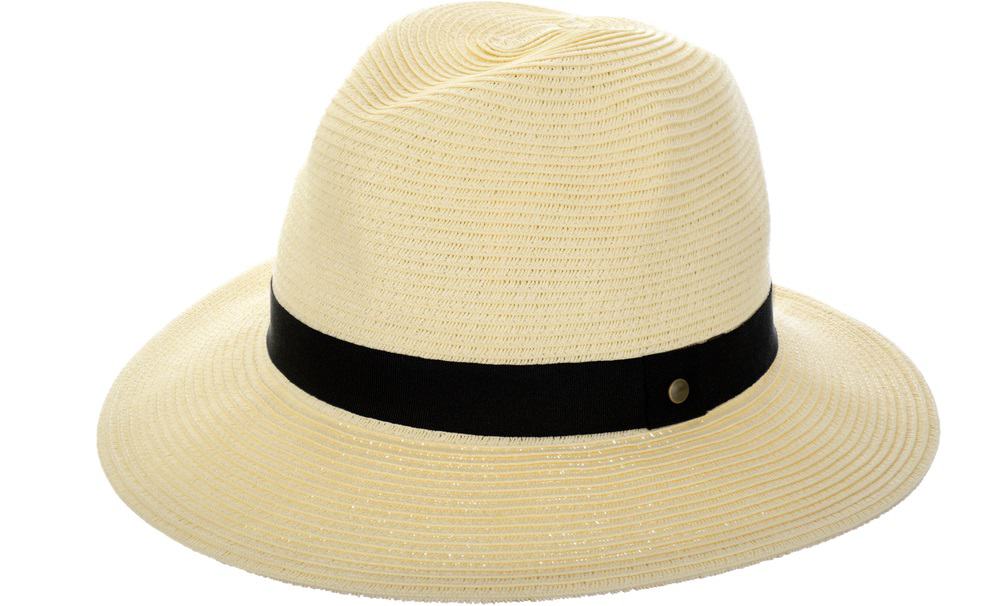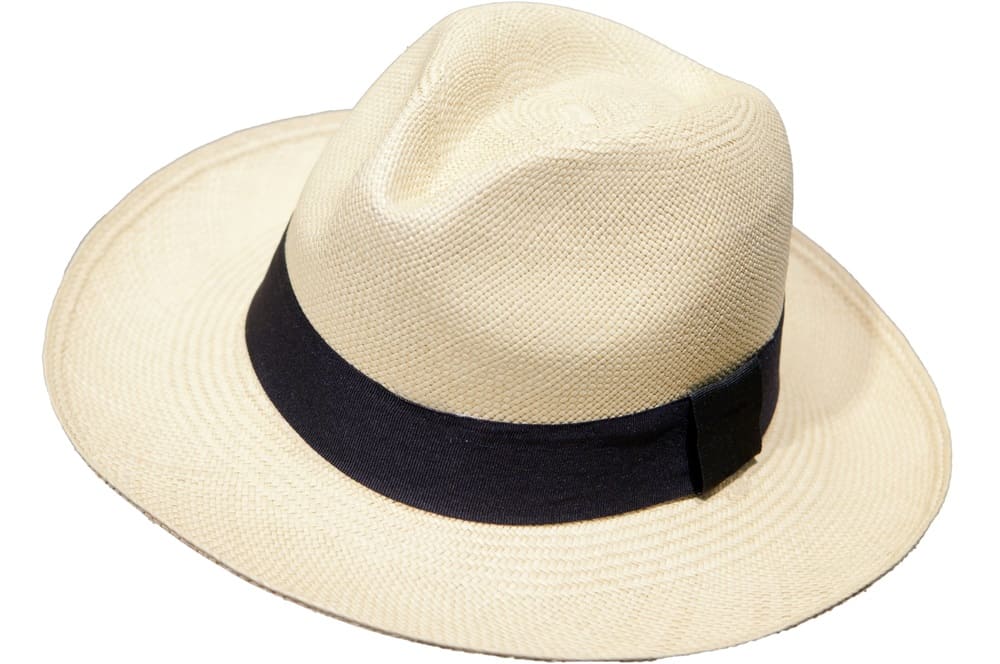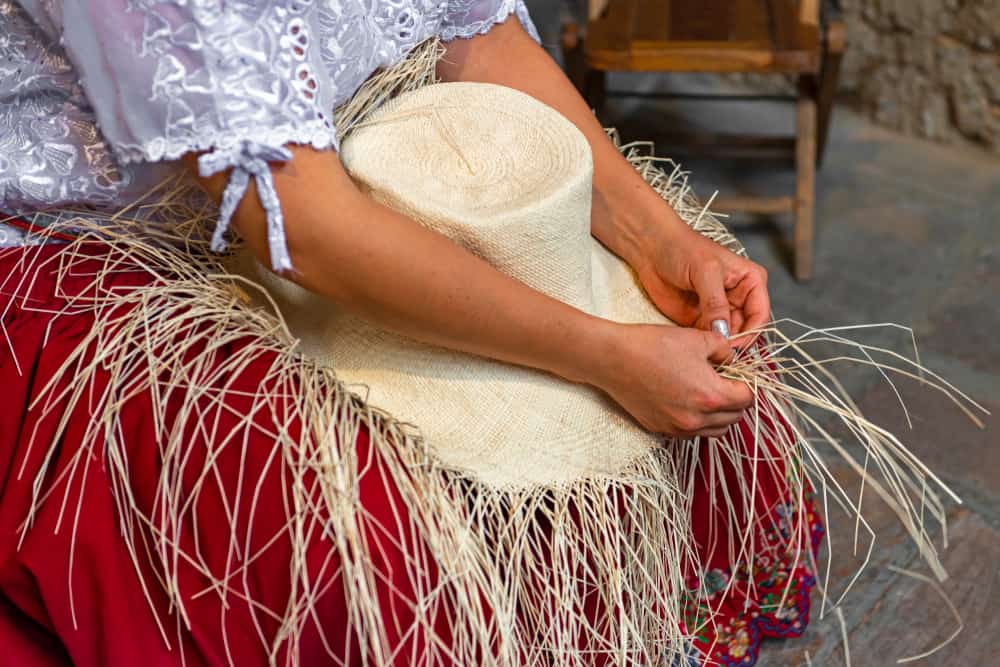You've heard the debate about Panamas and fedoras, right? If you've ever argued with someone over their hat, you might have thought that their hat was better than yours.

You’ve heard the debate about Panamas and fedoras, right? If you’ve ever argued with someone over their hat, you might have thought that their hat was better than yours. It is possible that you are simply wondering how these hats compare to each other and how they are distinguished from one another.
It gets heated (pun intended) when those questions and debates come up.
Table of Contents
- Fedora hat vs Panama hat
- Fedora hat traits
- Panama hat traits
- Fedora Hat
- Panama Hat
- Other Hat Options
Fedora hat vs Panama hat
Despite their similar appearances, Panamas and fedoras stand out for their differences. Although they are made of the same material, the different design of their style is determined by the material they are made from.
Panama Hats are made to the highest of quality by using time-honored traditions that guarantee the durability and quality of the hats for years to come. A genuine Panama hat takes a long time to weave and is made by highly skilled artisans whose craft has been passed down for generations. There are many weave techniques that are passed down from generation to generation, and the weavers keep their secrets for the long run.
Classic Fedora hats (famous for the teardrop crown) were made popular thanks to many old movies filmed in Hollywood during the 1930s, which gave way to an increase in popularity. Toquilla straw is what is used to make the Panama hat, and they are not made with recycled paper or plastic. Furthermore, they are eco-friendly men’s hats and unique, which means they are environmentally sustainable as well.
Panama Hats made with Ecuadorian toquilla straw are traditional Panama sun hats. It takes a hat maker to make a real, authentic dress hat of this style. Although both Panama hats and fedoras can also be made of straw, not all fedoras are made from toquilla straw and not all fedoras are woven in Ecuador.
Panama hats and Fedora hats look similar. These hats also have fedora styles, although they are made from different materials, and they are worn at formal events. The crown of a Panama hat may not always be pinched, such as the crown of a boater hat. Straw-based,
Fedora style, Panama hats are differentiated from fedoras by the material they are made of. There are many materials that can be used for the fedora, including wool (felt), cotton, and felt.
Fedora hat traits

- The crown on this hat is indented and the brim is soft
- The crown is “pinned” at both the front and the back of the crown
- There are a variety of hat crown styles that can be found on fedoras, including teardrops and diamonds
- Typically, crowns are about 11 cm tall (4.5 inches)
- Fedora hats typically have a brim 1.5 inches (4 cm) in diameter
- An unfinished raw-edged mattress can be bound with a trim band, finished with overwelts or underwelts, or left as is (unfinished)
- There are many types of felt used to make fedoras, such as wool, cashmere, rabbit, and beaver
Pros:
- Wearable for both formal and casual occasions
- Suitable for both men and women
- Suitable for many types of clothing
- It comes in a variety of colors
- The fabric can be found in various types
Cons:
- Today’s products may not always be high-quality
- Stores don’t always carry it
- Fit and size are challenging when ordering online
Panama hat traits

- Hats are lighter in color, lighter in weight, and breathable
- For summer suits, they are worn as accessories
- Made of silk or linen
- Made of toquilla straw
- Hat with square, cross-woven pattern
Pros:
- Is great for the summer
- Lightweight and not heavy on the head
- Is now popular amongst men and women
- Typically, made from high-quality materials
- Has a secure fit
Cons:
- Is not always suitable for every season
- Sometimes mistaken for the Fedora hat
Panama and Fedora are undoubtedly similar. However, Panama will always be woven, where a Fedora mostly is not. Panama hats are woven in a small square pattern of high quality straw. Fedoras are made from sturdy fabric like wool and felt.
Fedora Hat

There are a lot of different styles and types of hats for men today, but the fedora is one of the classics. Fedora hat for men made of wool felt with decorative pin and adjustable strap. It’s the same style as the original and even comes with additional features.
Hats are classics, and fedoras are no exception. The top of the bowl is a thin pinch where a brim extends all the way around. Felt, straw, and other natural fibers are commonly used in the making of fedora hats, which are available in a variety of colors and designs.
A ‘Fez’ is an early hat that was worn in Western Asia and is the source of the name. Inspired by this felt hat, later styles were made with a broad brim and short brim. Harrison Ford popularized the term ‘fedora’ on the North American continent.
Besides serving as style icons, Fedoras also function as practical weatherproof hats. Fedora hats keep your head and ears protected from harmful UV rays on those breezy, sunny days.
Round Fedora Hats feature a generous crown that offers plenty of shade while keeping you cool. The hat’s high-quality materials ensure that the hat will withstand rain, shine, wind, and anything else life can throw at it.
Brief History
Felt Fedoras are characterized by their softness. There are various types of felt that can be used to make fedoras. It has been more common for the felt to be made from fur (sable or rabbit), or straw material (fiber or oiled) since the 1940s when wool felt became fashionable.
The name fedora was coined in 1882 by Victorien Sardou for a play that was written by Sarah Bernhardt in 1889, and it first appeared in that year. In the play, a woman wears a soft brimmed hat as a way of expressing her emotions and power.
The Prince of Wales started wearing them around 1924, and they were quickly popular among men because of their stylishness as well as their ability to keep the wind out of their heads. It has been around since the early 20th century.
The fedora hat was a design staple in men’s fashion throughout the early 20th century. While they would usually be worn in almost all public places, men would remove their hats after leaving the office or when talking to a lady. It was considered common courtesy and a custom.
More than fifty years have passed since the fedora hat first became a symbol of style. In today’s modern world, many people consider it to be the most elegant and practical hat there is. The fedora became more popular after celebrities like Frank Sinatra, Dean Martin, and Cary Grant started wearing them.
Where do you buy it?
Fedora’s hats can be found in hat shops and online. Amazon is a major carrier of modern-day Fedora hats.
Panama Hat

An Ecuadorian hat with a small brim is known as a Panama. Construction workers and engineers working on the Panama Canal brought back the Panama hat from South America when they stayed there during the construction of the canal.
A band of the braided cord is commonly used to close the hat, which is typically made with “Toquilla straw.” It should be noted, however, that there are many other hats that are often referred to as “Panama hats” in spite of them actually being manufactured elsewhere.
There are many types of Panama hats, both traditional and modern, from solid colors and checks to a combination of both. We make each one by hand using the same traditional techniques and knowledge passed down from generation to generation throughout Ecuador.
The material is lightweight, breathable, and water-repellant — making them ideal for those who love adventure. If you take into account how frequently and where they are worn, it is possible they may be the last hat you ever need or want to wear.
A lightweight hat with breathability and light material is a popular summer choice because it keeps the wearer cool. A hat made from toquilla straw takes time to weave, resulting in a more expensive item.
Lightweight, lightweight, and breathable, Panama hats are light in color and have a Panama hat style. This type of hat is also known as a ‘tropical’ hat since it would often be worn and matched with lightweight summer suits, such as those that were made out of linen and silk. Several reasons led to their popularity, including their ease of wearing and breathable features.
Brief history
Historically, Panama hats have been made with great skill since ancient times. The emerald represents the central role of Ecuador in the history of Latin America. It has been an enduring and distinctive symbol of the continent since the 16th century.
The Panama hat of Manuel Alfaro became a symbol of his fame in Montecristi in 1835 when he appeared. A primary goal of his company was to export Panama Hats around the world. With the arrival of goods from the Gulf of Panama through Guayaquil and Manta, cargo ships travel directly to these cities.
In order to supply the sun hats that Rush Gold students needed, his business grew as more and more students came to Panama in search of them.
It is among the earliest Andean cities to introduce hat weaving, Cordery, the capital of the Azov region. The first braided willow hats from Ecuador were exported to the Panama Basin in the mid-19th century, like those from other South American countries, and they are still widely used in South America, Europe, and Asia is now in Asia. Afterward, they chose to call themselves “Panama Hat”, which reflects the international nature of their business rather than their origination in Panama.
Early usage of the term dates back to 1828. As a result of the Isthmus of Panama and Pacific Post Line, many Californian explorers journeyed from South or Central America to the state of California in the late 19th century. In 1906, while visiting the construction site of the Panama Canal, he took a photograph of the US President wearing a Panama hat, adding to the acclaim of the Panama Canal and making it more famous.
Weavers from Montecristi, Ecuador, who work with Panama Hats, still have access to the best training and jobs in the country. In addition to exporting Panama hats, companies like Dorfzaun, located in the northeastern part of Ecuador, offer a wide variety of high-quality handmade products to designer brands and retailers all over the world.
The goal of this project is to assist communities in protecting their intangible cultural heritage and traditional culture. The quality of Panama hats produced by Chinese companies is incomparable to that of hats of Ecuador’s Toqueira palms, even though Chinese companies are selling the products at low prices.
Where do you buy it?
Costume and hat shops are a good place to start. Panama Hat Mall is also a great place to buy one.
Other Hat Options
Straw Hat

There are many types of straw hats that can be made from plants, synthetic fibers such as straw, and even from cotton. Despite the fact that straw hats are known to be used as ornaments and uniforms, they are also used to protect people from the heat of the sun. There has been a tradition of wearing straw hats in Africa and Asia throughout the Middle Ages.
Throughout the Middle Ages and into the present day, they have changed little. In the famous calendar ‘Les Riches Heures du Duc de Berry’, there are a lot of activities, as all the classes of the Duc de Berry have ended, but mostly male students. In Lesotho, the Mokorotlu hat is a traditional straw hat model and bust representing the national symbol of the nation.
Lesotho is a country and people which exists in Africa. Additionally, the license plate on the vehicle for your country will include information about it as well. The President of the United States, Theodore Roosevelt, helped distribute Panama hats during a visit to the Panama Canal.
A series of photographs of the Panama Canal topography, created by Ross Foley in 1906, brought the attention of the public to the canal’s topography. There made it seem as if a muscular team wore light clothes, delicate straw hats, and a delicate appearance in the photo of the two standing facing each other.



